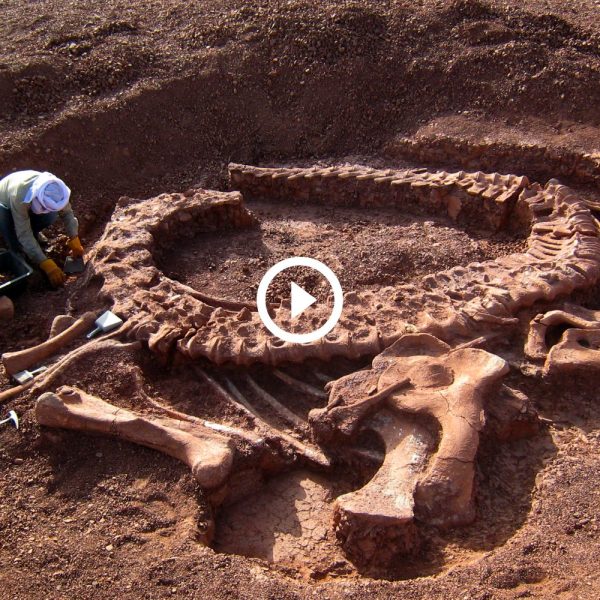In a cinematic scene reminiscent of Hollywood, the desert of Niger reveals a remarkable find—the beautifully preserved bones of a new dinosaur, Spinophorosaurus nigerensis.
Described by an international team of scientists in the journal PLoS One, this dinosaur, belonging to the sauropod group, lived during the Middle Jurassic period around 176-161 million years ago.

What makes Spinophorosaurus particularly intriguing is its completeness, marking it as the most fully realized early sauropod discovered thus far.
Despite not reaching the colossal size of some long-necked dinosaurs, Spinophorosaurus would have dwarfed even the tallest humans. However, it is the unique features of this sauropod that set it apart.
Notably, it possessed a formidable set of spikes at the end of its tail—a characteristic not commonly associated with sauropods.
The discovery reveals two pairs of large, bony spikes near the tail’s end, reminiscent of the arrangement seen in Shunosaurus, a contemporaneous sauropod from China, known for its spiked tail club.
The presence of these tail spikes underscores the diversity of defensive adaptations among sauropods, challenging conventional notions about this group of dinosaurs. Spinophorosaurus, with its distinctive tail weaponry, contributes valuable insights into the evolutionary strategies employed by sauropods.
Moreover, Spinophorosaurus holds significance in deciphering the global dispersion of sauropods during the Jurassic period.

The study suggests that this dinosaur is more closely related to Asian sauropods than those from southern continents, offering potential insights into the evolutionary connections between North African, European, and East Asian sauropods during the Jurassic.
While Spinophorosaurus may not represent the direct common ancestor, it provides crucial evidence for an evolutionary link between these regions.
The paleontological narrative continues to unfold, and Spinophorosaurus, with its exceptional preservation and unique characteristics, emerges as a key player in unraveling the complexities of sauropod evolution and distribution across prehistoric landscapes.
As further fossil discoveries shed light on the mysteries of the past, Spinophorosaurus stands as a testament to the awe-inspiring diversity of life that once roamed the ancient Earth.





